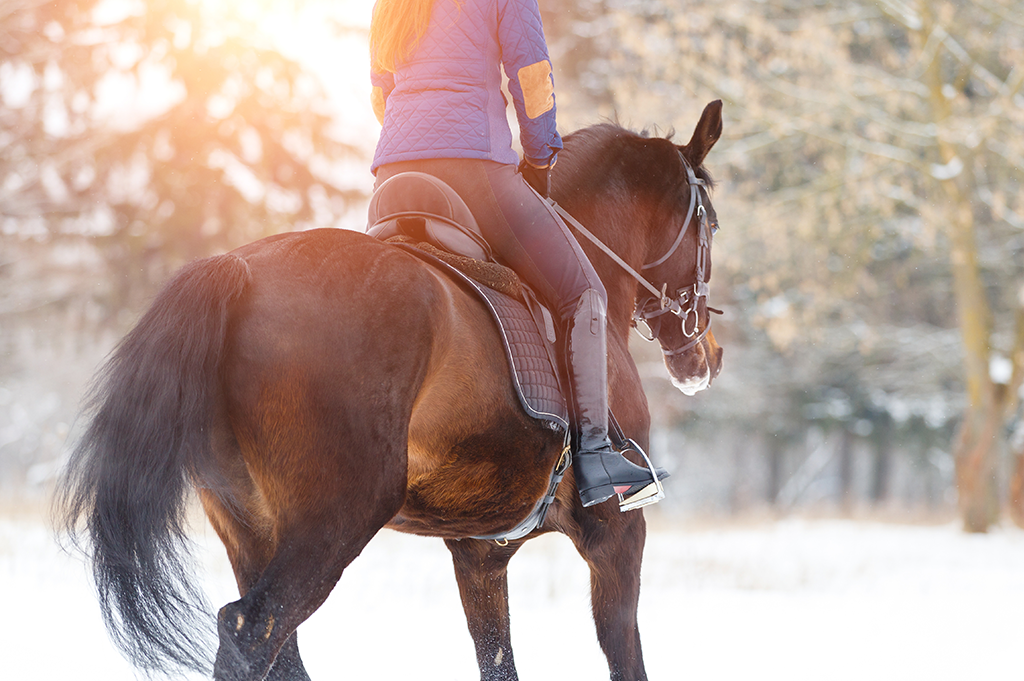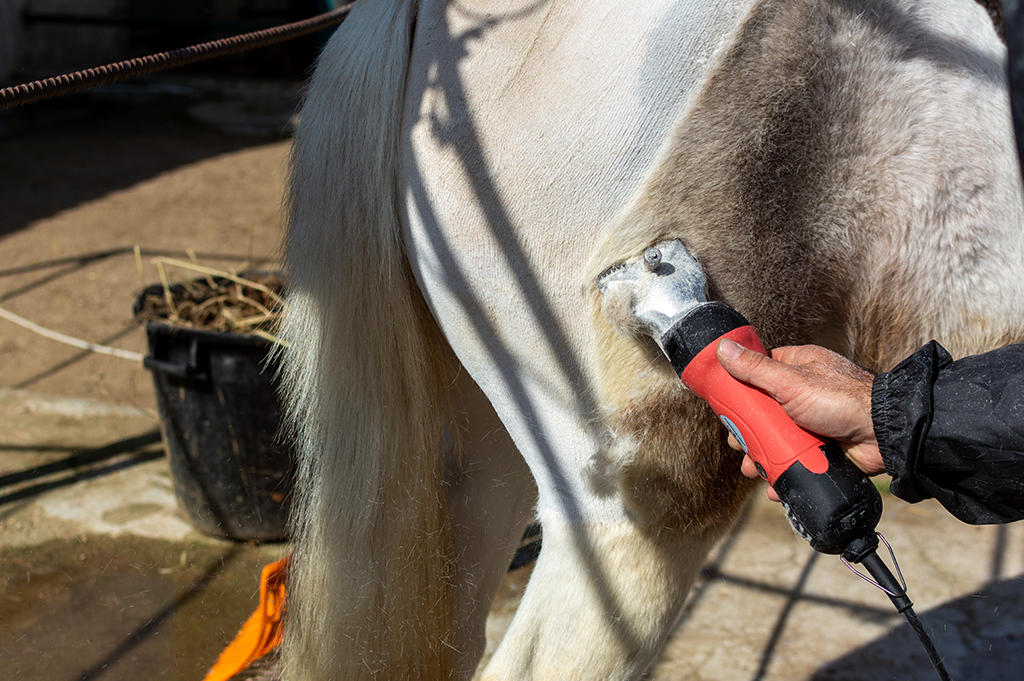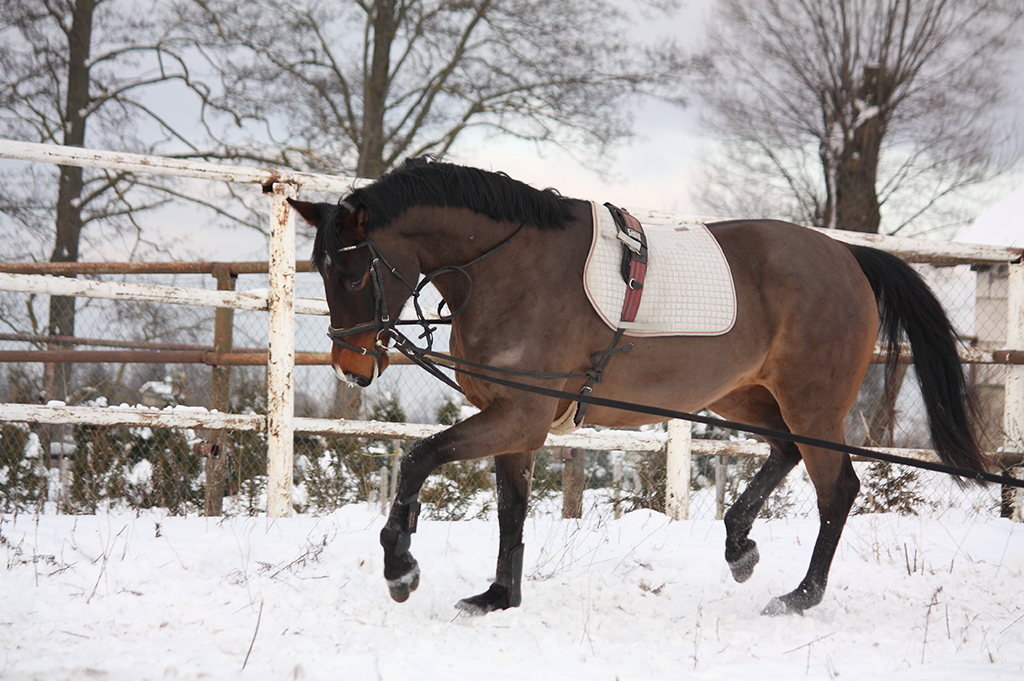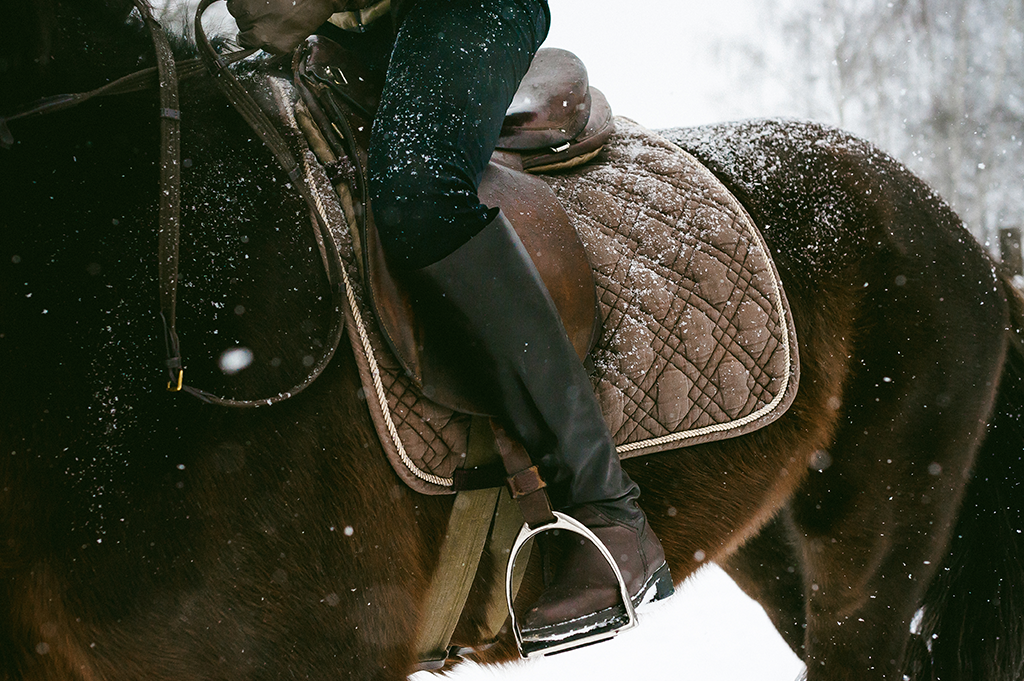
Saddled up with the urge to go into winter hibernation mode? Well, your horse may have other ideas! Unless it is unsafe to do so, you should try to keep up your horse’s routine and exercise throughout the colder months to prevent injury and boredom.
Here at The Insurance Emporium, we understand this can be a bit of a challenge which is why we have compiled 11 quick tips on exercising your horse throughout the colder months.
WARMUP & COOLDOWN YOUR HORSE
Be prepared to adapt your warmup and cooldown routine for the winter months. By ensuring that you take the time to warm up and cool down your horse, you can reduce the chance of it suffering from serious ligament injuries caused by the cold weather.
It usually takes longer for your horse’s joints to loosen up in cool conditions, so double the time of your warmup. At the end of your ride, ensure that your horse has cooled down by spending 10-15 minutes slowing its heart rate and breathing with light stretches. Ensure that there is no sweat left on its body before rugging and turning out.
CLIP YOUR HORSE
As winter comes into full force, your horse’s coat tends to become thicker to help protect them from the elements. Nonetheless, if you plan on exercising your horse over the colder months, clipping their coat may be advised. This helps body heat escape, preventing them from becoming too sweaty when exerting themselves.
A heavy unclipped winter coat can take a few hours to dry. This could result in your horse developing a cold or another ailment as the moisture clings to their body. In contrast, it is easier for you to dry the sweat off a clipped coat, meaning that your horse is less likely to become ill as it isn’t wet for hours.

HOOF CARE
Your horse’s hooves face several challenges during winter. Your farrier should be able to recommend the most appropriate footing for your horse depending on the duration spent outdoors, the terrain, and how much exercise they are having.
Some owners decide to remove the horses’ shoes during winter, if riding is kept to a minimum. However, if you plan on exercising your horse, you may want to consider special pads and ice caulks which can help stabilise your horse on slippery ground. You can keep your horse’s hooves in good condition by picking out their feet twice a day and cleaning mud off them whenever possible.
ASSESS YOUR HORSES PHYSICAL CONDITION
Consider your horse’s physical condition when planning their winter exercise programme. Take into account their fitness level and pre-existing illnesses, so you can create a plan that ensures your horse is safe but motivated throughout the dark and cold days. Keep your schedule realistic and be prepared to adapt it depending on weather conditions. If you suspect that your horse may be injured or unwell, get in touch with a vet immediately.
FREQUENT EXERCISE
Keeping your horse active is important for both their physical and mental wellbeing. Don’t wait until the weekend to get your horse moving, exercising your horse little and often is much better than vigorous amounts of exercise over a couple of days.
If you really can’t work your horse, think about some brain training games that you can do together. You never know your horse may be a puzzle master! If your equine struggles for motivation on even the best of days, then it may help to check out our guide on training a stubborn horse.

HAND WALKING
If riding your horse isn’t an option, consider hand walking them instead! This is a fantastic substitute to lunging as although it may not feel as intense, it will still help to keep your horse fit. You can hand walk your horse anywhere, just make sure that you check your footing as you go.
CHECK OUTDOORS SPACES BEFORE USE
Make sure that you assess outdoor spaces before using them. If you can safely scrape snow from your riding area, then do it! If you’re going on a hack, try to stick to areas you know and make sure you’re continually looking for any hazards that may be hiding under the snow or ice.
Taking it slow and steady can help you and your horse stay safe. It may be worth riding with someone else who can also keep an eye on the terrain as you go. The more eyes that can look for potential risks, the better!
ADJUST THE WORKLOAD
Make sure to adjust your workload depending on the weather conditions and the surface underfoot. The most important thing is that you and your horse can ride safely, which means planning your ride accordingly.
WATCH YOUR HORSE
You know your horse the best so, keep an eye on how it’s coping with the change in weather and training. If your horse lacks energy, is breathing strenuously, or refusing to move, seek advice from a veterinarian specialist immediately.
DRESS YOURSELF IN LAYERS
You may be thinking about how to keep your horse happy over winter, but don’t forget to look after yourself too! We’ve all been guilty of not layering up for winter rides. Though did you know that comfortable and removable layers can provide significant protection from the elements? Just pop a bag at the side of your horse’s saddle so, you have somewhere to store your layers.

WARM THE BIT
Don’t put a frozen bit into your horse’s mouth as this could cause pain and damage. Instead, warm the bit up for your horse. There are numerous ways you can warm up the bit, like pouring hot water on it, heating it in your hands, and even bit warmers! It’s your choice what you use.
CONCLUSION
Exercising your horse in winter can feel challenging when all you want to do is stay inside in the warmth. However, winter is a great opportunity to practice what you learnt over summer and keep your horse in tip top condition. You can also check out our caring for your horse in winter blog if you’re looking for some additional advice.
Get insurance for your horse with The Insurance Emporium. With Death, Theft or Straying as standard, you can then personalise your policy with our Optional Benefits such as Public Liability, EU use and much more!
This blog was originally written in 2020 and has been updated in line with current practices as of 2021. All content provided on this blog is for informational purposes only. We make no representations as to the accuracy or completeness of any information on this site or found by following any link on this site. We will not be liable for any errors or omissions in this information nor for the availability of this information. We will not be liable for any loss, injury or damage arising from the display or use of this information. This policy is subject to change at any time.


